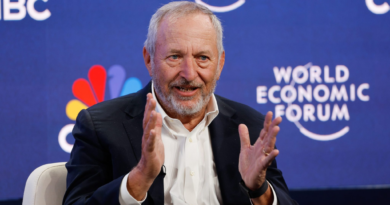Snacking is king—and inflation-proof—as more Gen Zers and millennials resort to small indulgences even with tight wallets, Toblerone and Cadbury maker finds
In an age of relentlessly rising prices, even the most luxurious things are replaceable. But chocolates, biscuits and nutribars aren’t.
People are prioritizing the ease and comfort of snacking in their busy lifestyles—often, even replacing entire meals for it.
“I think what we’re seeing is the continuing, enduring power of snacking,” Nick Graham, senior vice president and global head of insights and analytics at food behemoth Mondelez, told Fortune in an interview. In its State of Snacking report for 2023, released Thursday, the Chicago-based food company studies how consumers around the world think about snacking.
Graham has observed that people are using snacking “increasingly as a way to provide that pleasure [and] indulgence that’s more affordable and accessible,” especially when big experiences like travel feel out of reach.
As the cost-of-living crisis has persisted, the snacking industry has grown in markets like the U.S., the U.K., and Germany, according to data insights firm Mintel. Mondelez’s 2023 State of Snacking report found that two-thirds of people are giving in to the so-called “snackification” movement, breaking up big meals into smaller ones spread out throughout the day. This trend has been cooking for years, accelerated by the pivot to hybrid working, but has proved its ability to endure amid rising costs.
The near-universal importance of snacking calls back to the “lipstick effect,” in which beauty companies like Sephora benefit from people splurging on smaller pleasures when they can’t afford big ones during periods of economic volatility.
Chocolates have been pitched as one of the many alternatives to lipsticks—and they also happen to be among Mondelez’s largest varieties of snacks that the company makes, with brands like Cadbury, Milka, and Toblerone.
The U.K.-based Savills’s Stephen Toal argued that chocolate could be the new “lipstick,” while Deloitte suggested bourbon (the whiskey) was a better alternative. The takeaway? People eat and drink their inflation-linked sorrows away, and this time, they’re turning to snacks.
Mondelez reported in January that its net revenue grew by 14.4% in 2023. However, its volume/mix was positive, pointing to how people were actively choosing its brand despite price hikes, a Mondelez representative told Fortune.
“We’ve seen it historically—if you go back to prior disruptions, economic recessions, et cetera, there is a bit of a ‘lipstick effect’ on things like chocolate and cookies in particular, where people use that as a way to access affordably, accessibly a bit of indulgence, a bit of pleasure when they can’t necessarily afford other things,” Graham said.
The paradigm shift to snacking
Snacking has become the dominant force in the food industry. People are opting for snacks now more than ever before—so much so that the fraction of people globally snacking at breakfast or dinner has climbed to 58% in 2023 compared to 52% and 45%, respectively, in 2019, Mondelez found.
Millennials and Gen Z are at the forefront of this shift away from the sacred three-meal ritual, as they navigate busier lifestyles and the need to find newer experiences through food. In its snacking report, Mondelez surveyed over 3,600 people across 12 countries and found that the “experience economy” was a big driver for people as snacking presented a moment of escape for consumers.
“We see this real desire for novel experiences—something that’s a little bit out of the ordinary,” Graham said. He gave the example of Cadbury’s tropical pineapple-flavored chocolate and exotic Oreo flavors in China as ones that consumers sought.
It’s also becoming increasingly important, Graham said, to design snacks for the health-conscious shopper, offering nutritional benefits with a dash of guilt, while still being affordable.
“One of the main ones for us is also making sure that we’re hitting a magic price point for consumers because while we’re all having to deal with the cost of living… We also know that for many consumers, particularly on lower incomes, there’s just a certain price point that they’re not able to afford [going] above,” Graham said.
Costs have gone up on the business end, too, which has caused “shrinkflation” across different grocery aisles. Mondelez has shrunk some of its product sizes and jacked up prices as ingredient costs like cocoa and sugar have soared in the last few years. While some of these moves came from the brand, Graham says consumers too have been asking for smaller packets to control their portion sizes.
Mondelez, like other big food companies, plans to continue increasing prices as inflation remains elevated. But in the meantime, snacking in every shape and form will reign supreme.
“I think we’ll start to see people using snacking as not just ‘I’m going to fill this gap’ but actually really as a positive food choice to supplement their diet,” Graham said.




